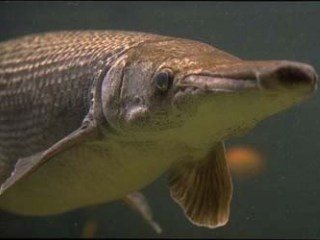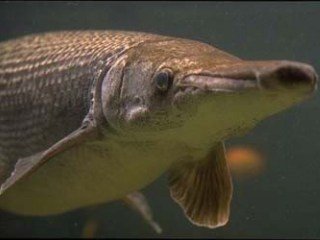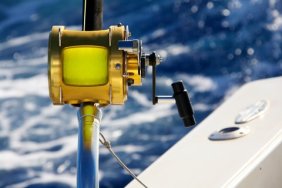 There are several species of predatory fish many anglers consider pests that do nothing but attack game species and hinder the population in a given fishery. So called "nuisance" species, such as bowfin and snakehead, have made a name for themselves as aggressive feeders in the water, but the most historically and ecologically controversial species is the impressive alligator gar. Is the alligator nothing more than a violent killer of popular game fish, or should anglers allow this living fossil the respect and consideration that such an icon of evolution deserves?
There are several species of predatory fish many anglers consider pests that do nothing but attack game species and hinder the population in a given fishery. So called "nuisance" species, such as bowfin and snakehead, have made a name for themselves as aggressive feeders in the water, but the most historically and ecologically controversial species is the impressive alligator gar. Is the alligator nothing more than a violent killer of popular game fish, or should anglers allow this living fossil the respect and consideration that such an icon of evolution deserves?
The alligator gar boasts many traits that make it a unique part of nature. It is common for the species to grow to lengths of eight to ten feet, and weighing over two-hundred pounds. Alligator gars also possess the ability to survive out of water for up to two hours with the aid of a bladder in their throat that draws oxygen from the air. The main thing to consider about the alligator gar is that, much like sturgeon, the species has existed for millions of years with no need to evolve. Furthermore, with hard scales covering their bodies, alligators have no natural predators and spend most of the time ambushing prey in slow-moving rivers.
It is true that alligator gar feed on other fish, but their behavior and diet differ very little from species like northern pike or even bass. Each species eats smaller fish and other prey items, the only difference being that gar are larger, so their prey items will be larger and sometimes include game fish.
Many anglers see the diet of gar as having a negative impact on a fishery, however, and gar are often killed upon capture, especially when bowfished. The fish is popular amongst bowfishers because of its immense size and the fight it puts forth while on the end of a line. Also, gar have a tendency to wreck the nets of commercial fishermen in the southeastern states, which only adds to the aggravation it sometimes causes anglers. The most extreme act against the gar, described in detail on an episode of River Monsters, occurred in 1933, when, in an attempt to eradicate the species permanently, the Texas Game Fish Commission built what it called the "gar destroyer." This barge, rigged with a 200-volt electric net, triggered a campaign against the gar that spanned over the next three decades and claimed the lives of millions of gar. The current gar population in these southern regions is merely a fraction of what it would be had such a ruthless killing of the species not occurred, and the fish is even declared endangered in some states (no species of gar is included on the IUCN Red List).
While alligator gar are a primarily carnivorous species, the fish itself is generally shy and avoids contact with humans, warranting no need for the aggressive reputation it has earned, or its callous destruction by many. It is simply another fish species, with its own unique characteristics and habits, all of which should be respected and considered from a sportsmanlike perspective. Should you encounter alligator gar on your travels, treat it as you would any other fish and practice catch and release, but remember to stay away from the gar's teeth. After all, you wouldn't shoot a sturgeon, needlessly killing it, so why do such a thing to another living fossil?








